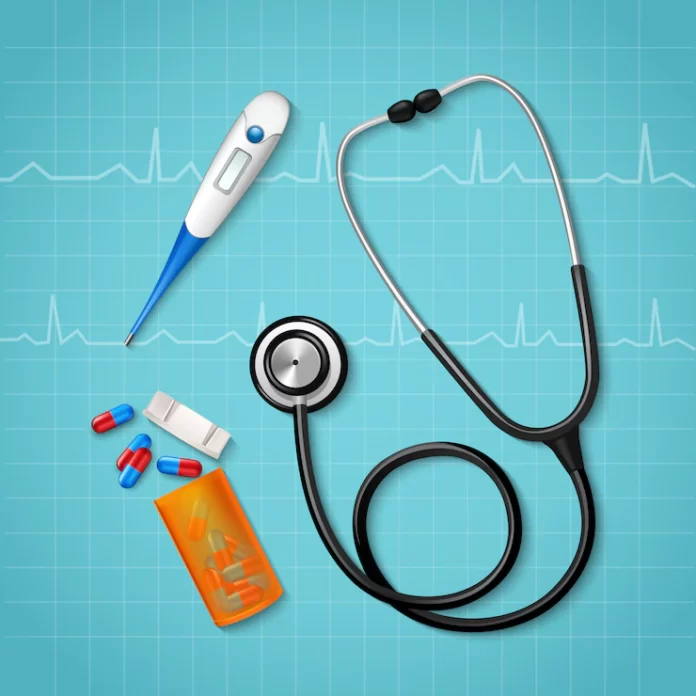Routine blood pressure measurement is the primary diagnostic tool measured by sphygmomanometers, popularly known as sphygmomanometers, which must undergo regulatory validations and approvals.
The primary care teams, doctors and nurses are the first lines for the detection of hypertension. In the consultation, they have action protocols to carry out periodic measurements. If the patient is not diagnosed, from that moment, he can start his treatment if necessary.
Community pharmacists also contribute to the measurement and control of arterial hypertension.
Other areas that help the patient identify hypertension and warn him that it would be advisable to go to a specialist to obtain a possible diagnosis are routine check-ups. For example, companies do check-ups or when patients have a check-up because they want to start practising something federated or semi-professional sport.
“These controls are essential because they are normally carried out on people who have never been to a doctor because they have been healthy up to now, and it can help diagnose the patient,”
Treatments
To treat it, there are two fundamental blocks to follow:
Improvement of life habits
A person should follow a healthy diet, reduce the consumption of high calories, sugars and fats and increase physical exercise.
Pharmacological treatments
If lifestyle changes do not work, today, pharmacological treatments are beneficial to control blood pressure. Initial treatments start with a single drug. However, in some cases, the need must be combined with two or three medicines to control blood pressure.
Drugs for hypertension are divided into the following groups:
- Diuretics (thiazides, chlorthalidone and indapamide).
- Beta-blockers.
- Calcium antagonists.
- Angiotensin-converting enzyme (ACE) inhibitors.
- Angiotensin II receptor antagonists (ARA-II).
A sixth group should be added, alpha-blockers, which are considered second or third-line treatment.
Because high blood pressure is a chronic disease, patients must be consistent with treatments. According to Seh-Lelha data, 90 per cent of patients diagnosed with hypertension do not follow the recommendations of specialists regarding hygiene or diet, and 50 per cent do not follow the prescribed treatments.
This is because, as it is a pathology that has been suffered for many years, patients tend to relax with the instructions given by the doctor. This can have several consequences. The main one is that they will have poorly controlled hypertension, which in the long term can lead to major cardiovascular complications such as myocardial infarction, stroke, impaired kidney function or circulation in the legs, among others.
Other data
- Forecast
In recent years, the degree of control of hypertension has been increasing due to improved treatments, intensifying them, and increasing awareness of improving lifestyles. For example, medication reinforcement (patients who previously only took one and now take two) has been crucial in enhancing control.
Cardiovascular diseases remain the leading cause of complications and mortality worldwide. This situation will continue in the coming years due to the obesity epidemic that health authorities expect will increase.
When should the specialist recommend self-measurement of blood pressure?
In general, the health professional can always recommend self-measurement of blood pressure (with a few exceptions, mainly in obsessive patients with a tendency to self-medication). It is a very effective method that allows knowing the patient’s tension outside the consultation, in their daily life, thus avoiding the so-called white coat phenomenon (the sensation that patients experience when they arrive at the health centre and stand in front of the professional This phenomenon causes the blood pressure of patients to rise a little concerning its average figure).
Self-measurement of blood pressure should be done in the morning and at night, after resting for 3 minutes beforehand. The proper position is as follows: sitting, with legs uncrossed, back against the chair and the arm where the cuff is placed on the table. It is recommended that the cuff be placed on the arm (and not on the wrist, with some exceptions -obese people-).
After the self-measurement, the patient must record the results by writing them down in a notebook. He should take this notebook to the appropriate healthcare professional (doctor or nurse) to review them together when he has his appointment. With these results, the professional will assess the treatment and follow-up of the patient.
pressure measuring devices
There are various devices for measuring blood pressure:
- Mercury sphygmomanometer: It is the most accurate and less prone to errors. A stethoscope is required for its use.
- Air sphygmomanometer: It is the most used, and it is also a precise device. You also need a stethoscope for its use.
- Electronic device: It is widely used to carry out self-monitoring. It does not need a stethoscope because it has a built-in pulse detector and is easy to use. However, it is a device that is very sensitive to noise and movement, so for the values obtained to be accurate, it is necessary that the arm does not move and that the person does not speak. The device must be in good condition.
In addition, to measure blood pressure, a series of conditions must be met:
To measure BP, the cuff of the sphygmomanometer should be placed at the level of the heart. The upper edge should be at least two centimetres above the bend in the elbow. The cuff is then inflated to a pressure of 180 millimetres of Hg. If it is known that the systolic pressure was above this number in previous measurements, it is raised to a pressure of 200 mm Hg above the last known pressure. The bell of the stethoscope is placed where the arterial beat has previously been located in the flexure of the elbow, and the cuff is gradually deflated. The first beat heard corresponds to the systolic or maximum pressure and the disappearance of the beat to the diastolic or minimum pressure. In children and also in some adults, the beats do not go away;

